The diving spots

Click on the different sites to discover them

Au large de la baie de Cassis, le phare de Cassidaigne se dresse comme une invitation à la plongée.
1 of 22 Le FortierAbrité du vent d’est (pas trop fort quand même) par la Cap Canaille, cette roche débute à 25 m et tombe jusque 35 m maximum.
2 of 22 Les RascassesBien abrité du vent d’est, ce site de plongée est peu profond (entre 6 et 15 m) et très poissonneux.
3 of 22 L'ArèneCe site est réservé aux plongées pour débutant. Un petit fond de 6 m maximum, en bordure de la matte de posidonie.
4 of 22 Port Pin 5 of 22 Castel VieilTrès beau tombant abrité du mistral. La roche est creusée de niches abritant profusion de corail et d’anthozoaires.
6 of 22 La Pointe CacauPlongée se situant à l’abri du mistral et du vent d’est. Un tombant coloré (gorgones rouges et corail) part de 15 – 20 m et descend vers 42 ou 43 m.
7 of 22 FiguièreA la sortie de la superbe calanque d’en vau, ce tombant abrité du vent d’est est intéressant de 15 m jusque 44m.
8 of 22 L'EissadonUne roche truffée de passages secrets et de recoins vous attend pour cette plongée peu profonde, mais combien surprenante.
9 of 22 Le JardinDe grandes failles s’enfoncent dans la falaise. De la surface jusqu’environ 20 m.
10 of 22 La Calanque de l'OulePlongée abritée du vent d’est. Pas trop profonde. Il y a de belles failles dans la roche, puis de blocs qui nous amènent au centre de la calanque, vers 15 à 20 mètres.
11 of 22 Le SoldatLE SOLDAT
A quelques dizaines de mètres de la cote, ce sec démarre vers les 18 m et tombe jusque 50 m.
12 of 22 La Grotte à CorailSous la falaise, s’ouvre ce surplomb tapissé de corail. De 5 à 20 m vous serez éblouis si vous avez pensé à recharger les accus de votre phare.
13 of 22 Le Dromadaire 14 of 22 Grottes de Plane 15 of 22 Tombant de MorgiouPlusieurs plongées peuvent être effectuées sur ce magnifique tombant bien abrité du mistral.
16 of 22 Couloir à GorgonesPremier îlot rencontré en allant vers Riou, le grand conglué est une magnifique plongée, mais qui ne peut se faire que par beau temps.
17 of 22 Grand CongléPremier îlot rencontré en allant vers Riou, le grand conglué est une magnifique plongée, mais qui ne peut se faire que par beau temps.
18 of 22 Impérial du LargePar belle météo, il s’agit d’un must réservé aux plongeurs expérimentés. La plongée est intéressante à partir de 35 m, car la partie peu profonde est battue par les courants et les vagues.
19 of 22 Pierre à Tonton 20 of 22 Impérial du MilieuTrès belle plongée convenant à tous les niveaux de plongeurs à condition que la météo soit clémente depuis plusieurs jours.
21 of 22 Impérial de TerrePar belle météo, il s’agit Paroi accidentée, abritée du mistral (mais attention, il faut aller jusque là), truffées d’échancrures. Toutes les failles sont abritées de corail, de spirographes ou d’éponges colorées.
22 of 22
La Pointe Cacau
This diving spot is protected from the Mistral and from east wind. It is very colored (red coral, gorgonia). The dive begins at 15m and the bottom is about 42-43 m.
When you go direction Cassis there is a lot of rocks where it’s possible to find conger-eel or
sometimes lobster. There are also a lot of groupers and sometimes barracudas or dentex or
amber jacks. It’s an interesting dive spot, there also cannons between 15 and 9m. Precautions should be taken when returning to the surface due to other boats cruising the area, including a surface marker buoy.

Figuière
When you come out the En Vau Calanque, this drop off is interesting from 15 to 44 m.
You can find murena, congre-eel and different kind of lobsters in a pointe rock.
When you ascend, you may encounter a group of hunting bass.

Castel Viel
A very beautiful drop off protected from the Mistral. On the wall, you will find a lot of red gorgonia and yellow encrusting anemones. Don’t forget your lamp. There are also groupers and if you look carefuly, you may see a John Dory. On an overhang around 15m, you may find nudibranchs. At 9m, there is a stunning tunnel with an L shape, full of yellow anemones.

La Grotte à Corail
It’s not exactly a cave but more an overhang from 5 to 20 m deep. With your lamp you will enjoy a world of color. Not far away, you can admired lots of red gorgonia. In front of this overhang you can see shoal of breams and a little deeper, between big rocks, there is a family of groupers. During the summer, there is a sunfish cleaning station, and tuna fish have been seen at this diving spot. We ask you to be very careful because the red coral is rare and fragile. Please pay extra attention at your fins, hands to conserve the beauty of this spot.

Le Jardin
Big crevices are present from the surface to the bottom. It is a world for a special flora and fauna. Don’t forget to look behind you so you will appreciate the view and the games of light. In front of the crevices there are a lot of rocks which are inhabited by brown meagres. Of course, there is no garden without dwarfs. At 30m they are hidden with Snow White under a rock.

La Calanque de l'Oule
This diving spot is protected from the east wind, it’s not very deep but interesting. You can find beautiful crevices then rocks toward the the center of this Calanque. In the bottom, you’ll find sand and eel grass but otherwise rocks inhabited with small murena, congre-eel, breams, saupes and shrimps.
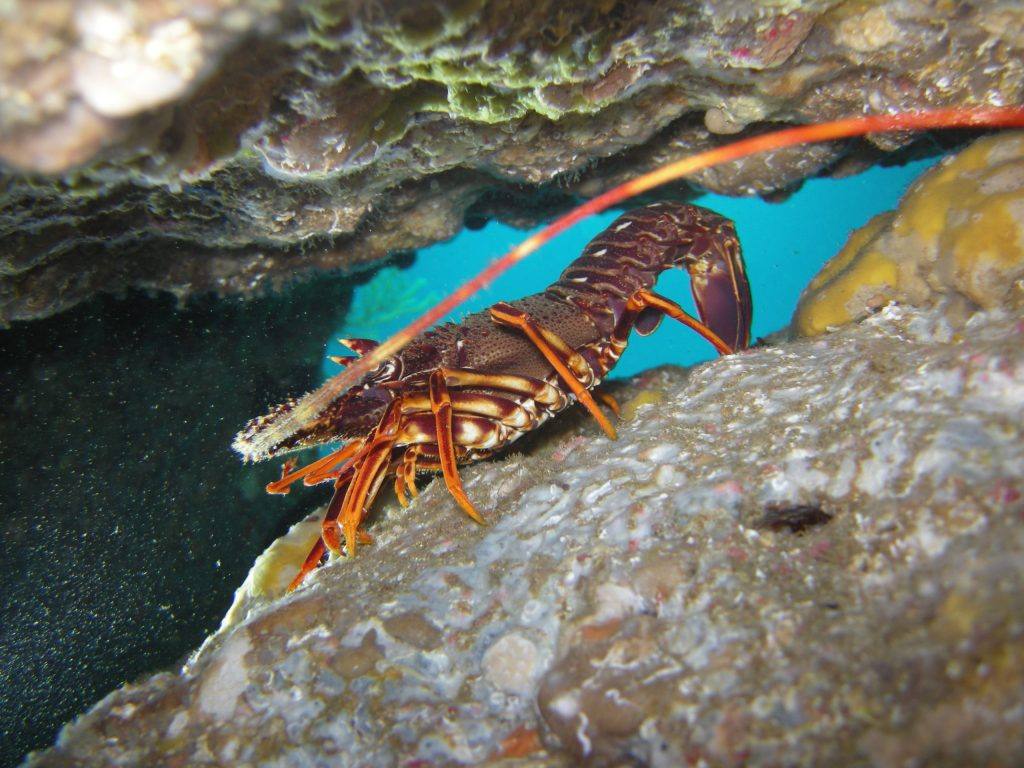
L'Eissadon
A rock full of secret passages and nooks and crannies awaits you for this shallow but surprising dive.You will find cuttlefish, groupers and forkbeards, moray eels, lobster and shrimp, grouper, sea bass, octopus and all this in the area close to the surface. Don’t expect to see huge animals, it is fabulous for the pleasure of the eyes.

Lîlot
Shallow dive in a beautiful cove. Reflections under the surface and very clear water. It’s as beautiful underneath as it is on top if you take the trouble to look under the overhangs. Don’t expect to make THE encounter of your life, but you’ll meet everything, if you take the trouble to look. A great place to spend a quiet afternoon.

Le Soldat
A few tens of meters from the coast, this dry starts at about 18 m and falls down to 50 m. It is a dive a little offshore and therefore you have to be careful with the current and the fact that the stops are made in open water. But the reward is at the end. All the fauna and flora of the open sea can be found on this small piece of rock.

Morgiou
Several dives can be made on this magnificent drop-off well sheltered from the Mistral wind. The rock falls vertically down to 20 to 25m and then a second drop off takes you to a depth of around 50m. Lots of coral, gorgonians and some wrecks (a small pointed one, old cars), shelter forkbeards, lobsters. On the drop-off, open your eyes, you will usually find some Saint-Pierre on this site. But as they stand in front of you, it is difficult to spot them. If you take the drop-off on your right hand, you will be able to spot a superb cannon, thrown from the cliff.

Le Grand Conglué (La Pierre à Cassis et le Couloir à Gorgogne)
First islet encountered on the way to Riou, the big conglué is a magnificent dive, but can only be done in good weather. The water is generally very clear and allows to meet groups of hunting bass and tuna. But also a beautiful colored drop off. Be careful with the depth and the current stream which can be strong. Be also careful, there is a forbidden zone. Diving for (very) experienced divers.

La Pointe Caramassagne
This dive allows you to walk either on a very clear drop-off (but well exposed to the current) or on a less important bottom (about 20 m). It’s very full of life, groupers, barracudas, octopus, big scorpion fishes and the sun reflecting on the surface.
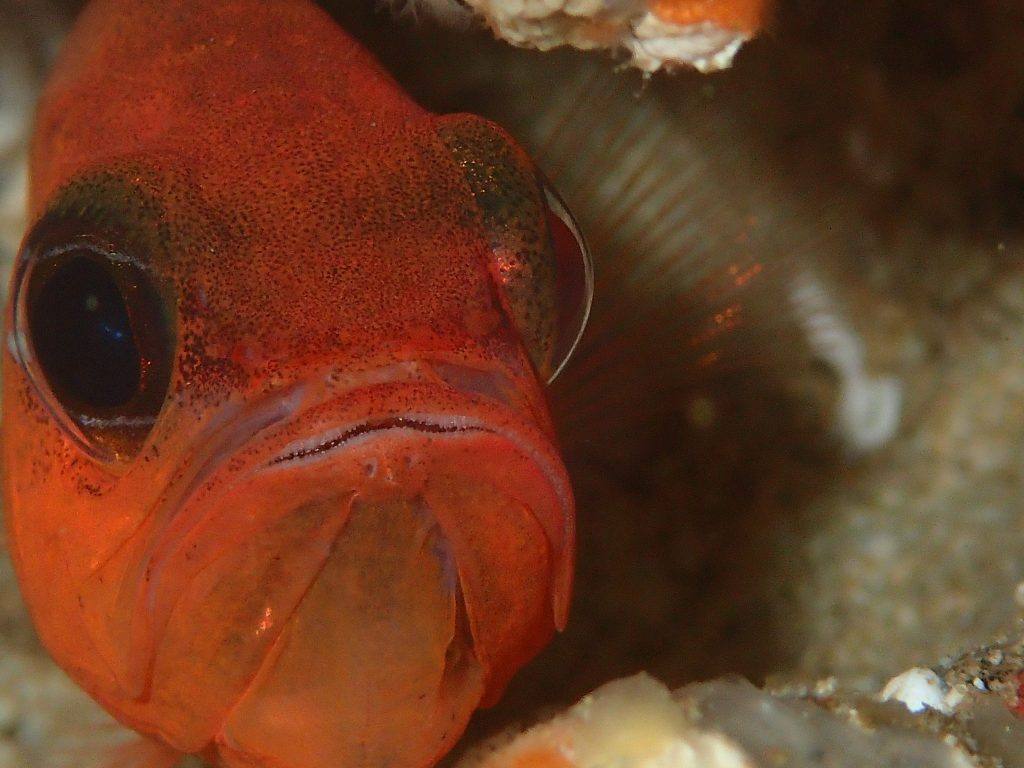
L'Impérial de Terre
Uneven wall, sheltered from the mistral (but be careful, you have to go that far), full of indentations. All the faults are lined with coral, spirographs or coloured sponges. A real labyrinth of guts where light shines through openings. From the surface to a depth of 20 m, you will enjoy yourself, whether you are a beginner or an experienced diver.

L'Impérial du Milieu
Very nice dive suitable for all levels of divers provided the weather has been good for several days. The dive takes place in a spiral around a small rock emerging off the coast of Riou. The water is clear, the western drop-off is populated by gorgonians, the fauna is abundant and of beautiful proportions. A paradise for photographers thanks to the limpidity of the water and the numerous faults allowing impressive backlighting.

L'Impérial du Large
In good weather, this is a must, reserved for experienced divers only. The dive is interesting from 35m, because the shallow part is beaten by currents and waves.
But it is a feast for the eyes, especially if, by chance, you meet a school of barracudas during your decompression.

Cassidaigne - Le Tombant
Off the bay of Cassis, the lighthouse of Cassidaigne stands like an invitation to dive. Cassidaigne’s drop-off is to the north of the beacon, ending the plateau bordering the lighthouse. At the bottom (about 45 m), you have to look into the holes in order to see the many long-clawed galatees hiding there. Pelagic fish are frequently present, but during your stopover at the foot of the beacon, you will also encounter peacock wrasse and some moray eels.

Cassidaigne - La Vieille
This small dry to the south east of the lighthouse neary emerges above the water, but descends calmly, in bunches of rocks. Here, you have to pay particular attention to your compass in order to get back to the anchorage, because by dint of going left and right, you’ll find that you’ll be able to find the way back. And offshore, there may be a current… But you’ll see grouper, lobster and maybe a tuna.
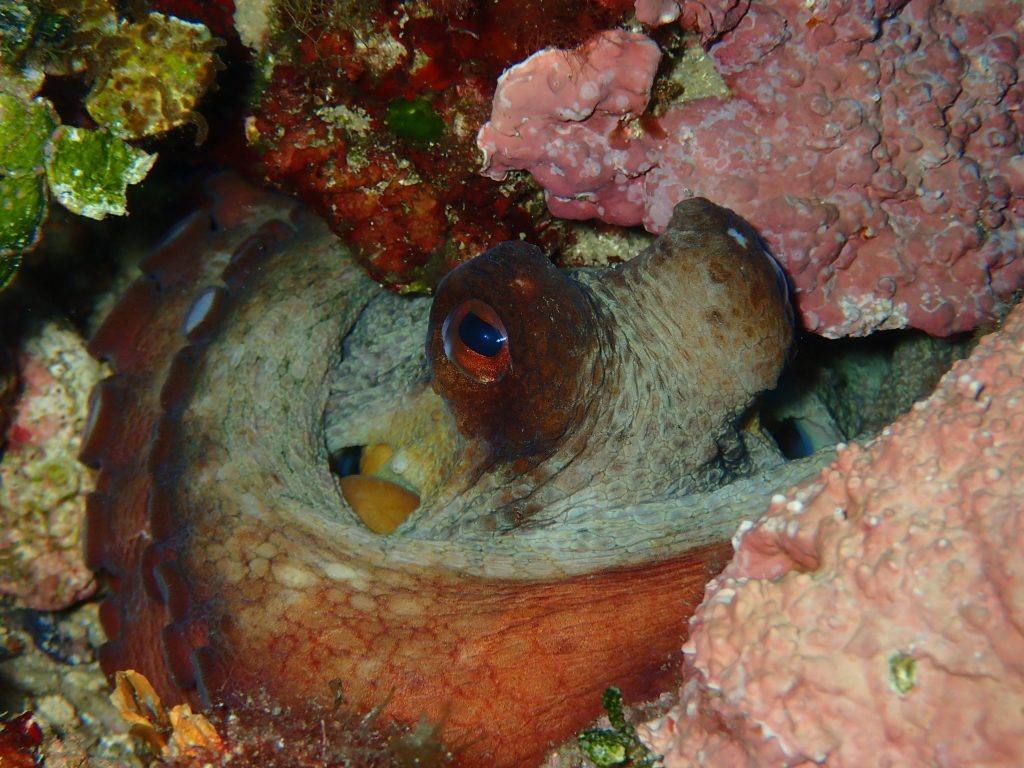
Le Fortier
Sheltered from the easterly wind (not too strong though) by the Cap Canaille, this rock starts at 25 m and falls down to 35 m maximum. This dive is for experienced divers only. It is not very deep and so is full of big sars, conger eels, dentis and capons. The rock is riddled with holes and rags and is conducive to interesting encounters. On the other hand it is a descent into the blue.
In the summer, it is not uncommon to come across either barracuda or sunfish, or exceptionally both at the same time … But that’s luck….
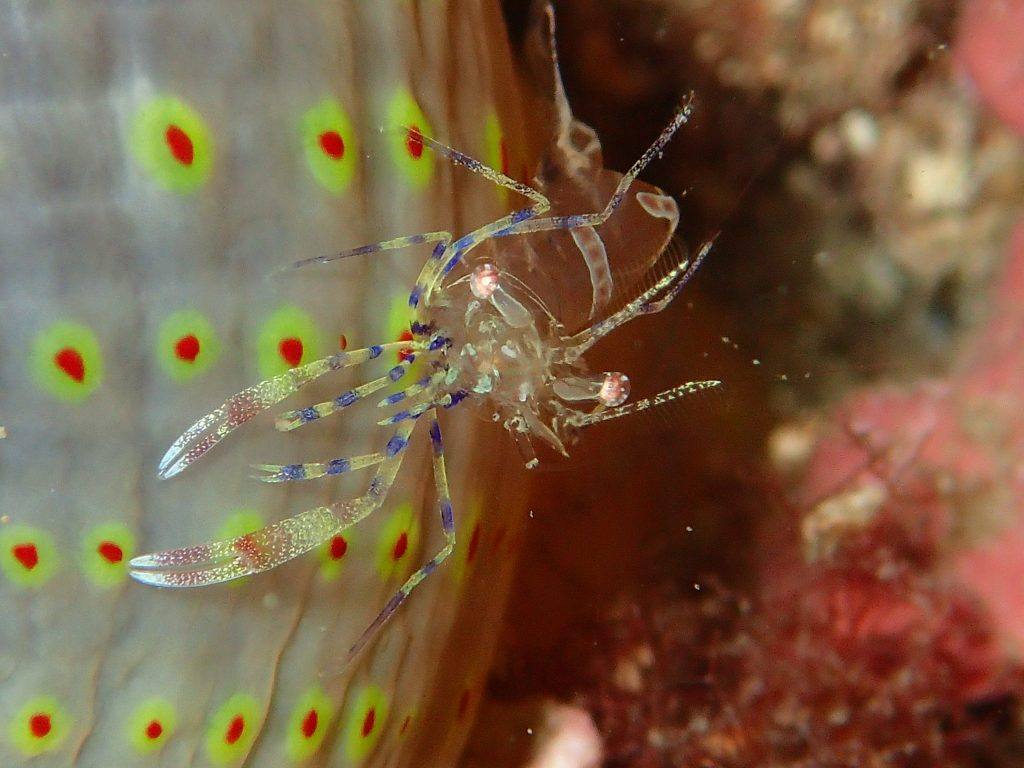
Les Rascasses
Well sheltered from the east wind, this dive site is shallow (between 6 and 15 m) and very fishy. The dive is made up of a field of boulders, between which sandy tongues welcome posidonia and mother-of-pearl. Moray eels, octopus, saupes, periclimene shrimps and more rarely syngnates can be found in the generally clear water. Groupers are not yet numerous, but are present. And sometimes barracudas which come to hunt at shallow depths
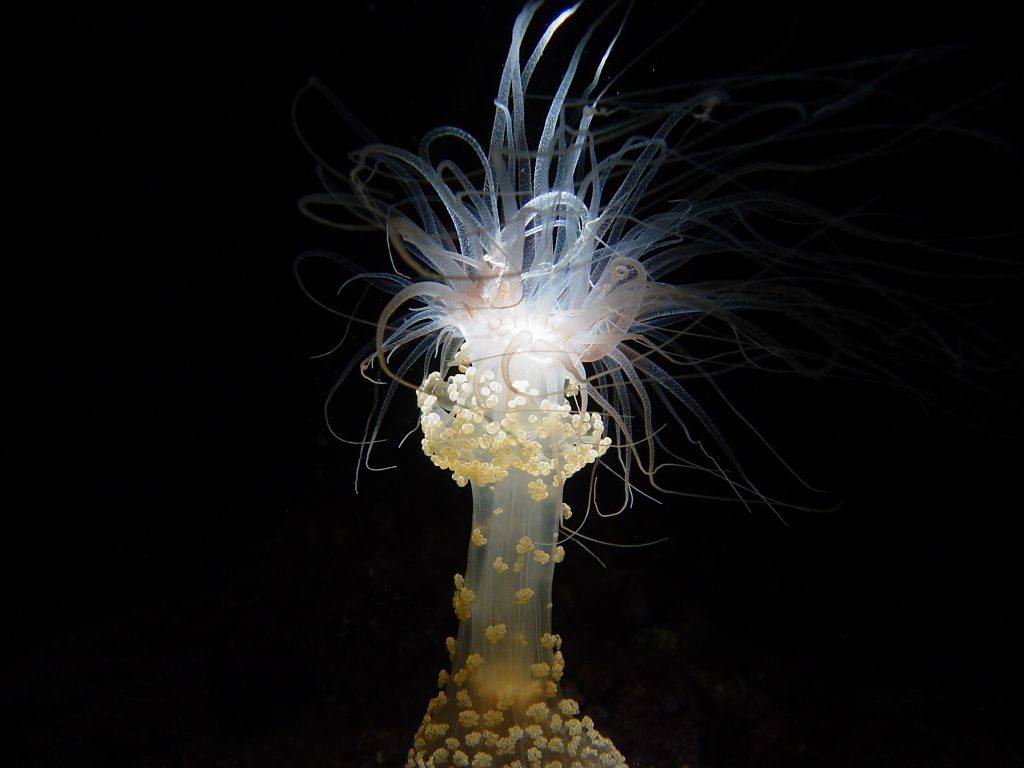
L'Arène
This site is for beginner dives only. A small bottom of 6 m maximum, on the edge of the posidonia matte. One can admire the reflections of the sun on the sand.
And on the bottom, small sepioles, flatfish on the sand and in the posidonia matte, spirographs and all the fish that come here to shelter and reproduce.

Les Trémies
Between the Calanque de Port Miou and the Pointe Cacau, lies the Anse des Trémies. Well sheltered from the west wind and the Mistral, The Tremies were once used to load stones from the Cassis quarries. And one can find the vestiges of them at the bottom of the cove (small cart in particular). The maximum depth is 20 meters. One goes along the wall full of holes and nooks and crannies. Lots of nudibranchs, coral from 8 m deep. Often groupers and schools of mules.
And a few meters further on, the entrance to the hopper cave (also called archaeological cave) where traces of human habitat have been discovered.
Be careful, the entrance of the cave is nice (coral, Neptune’s lace, yellow solitary coral, cicadas, ceranthe, …), but it is forbidden to venture deeper, unless you are certified and equipped for cave diving.